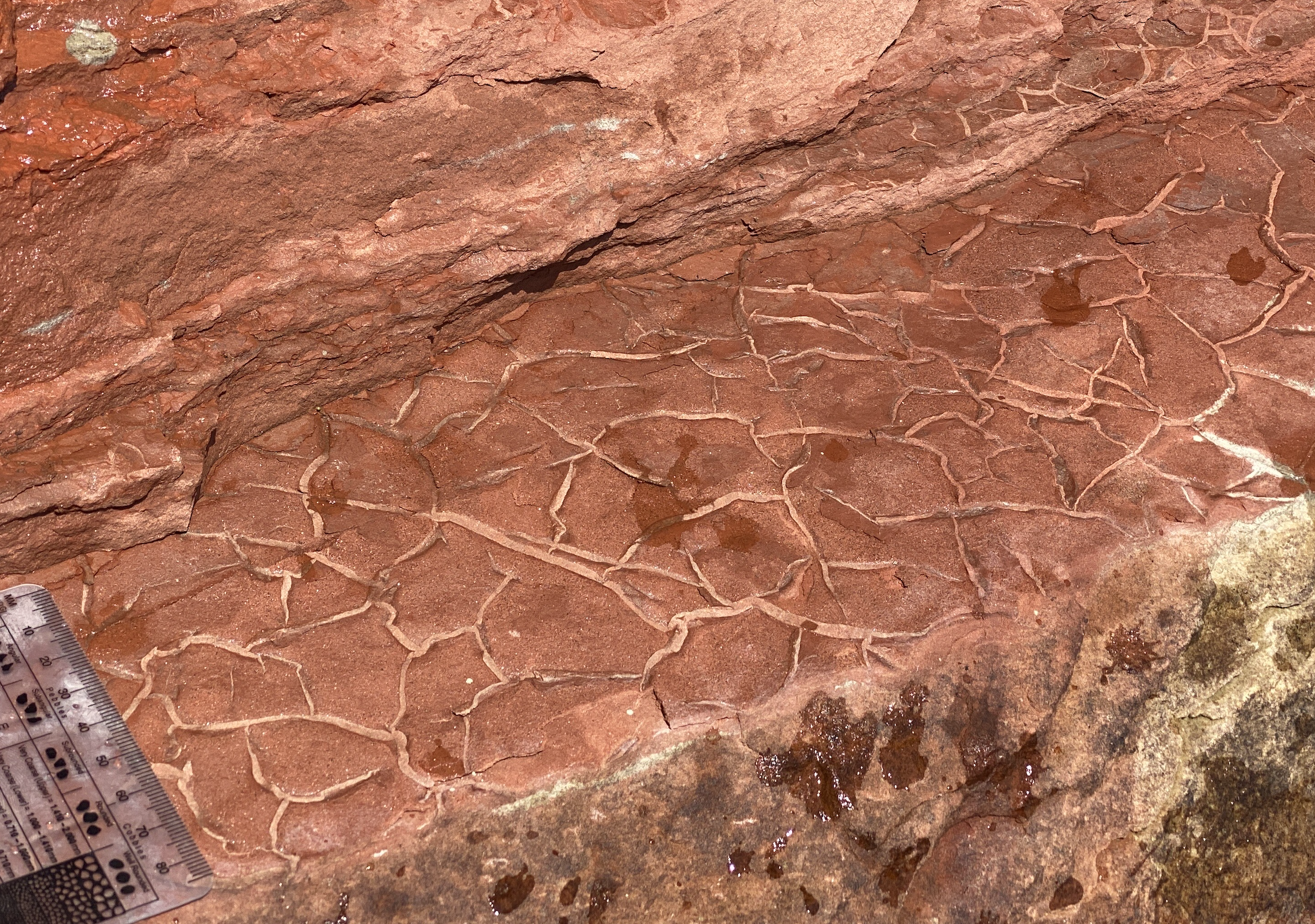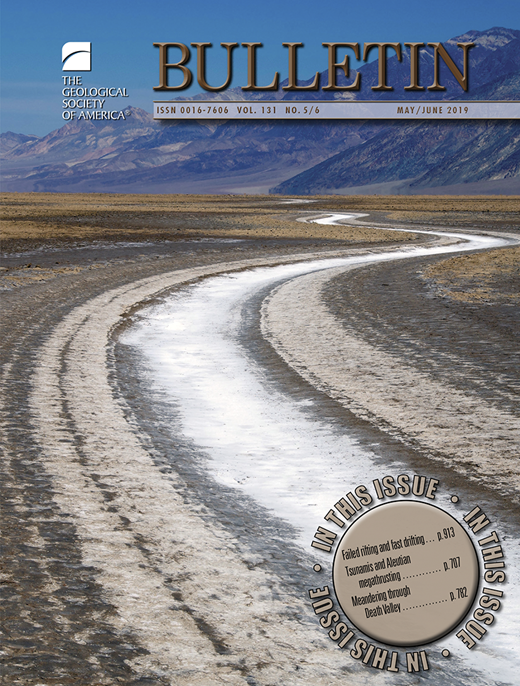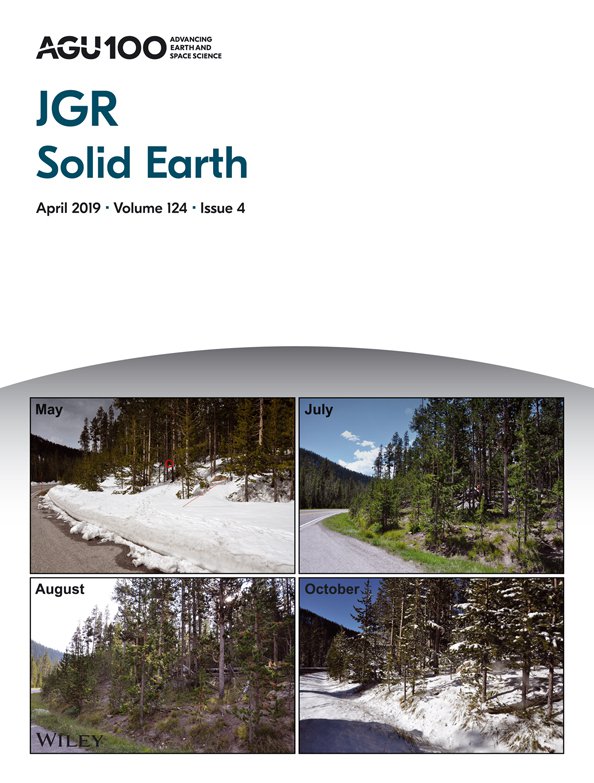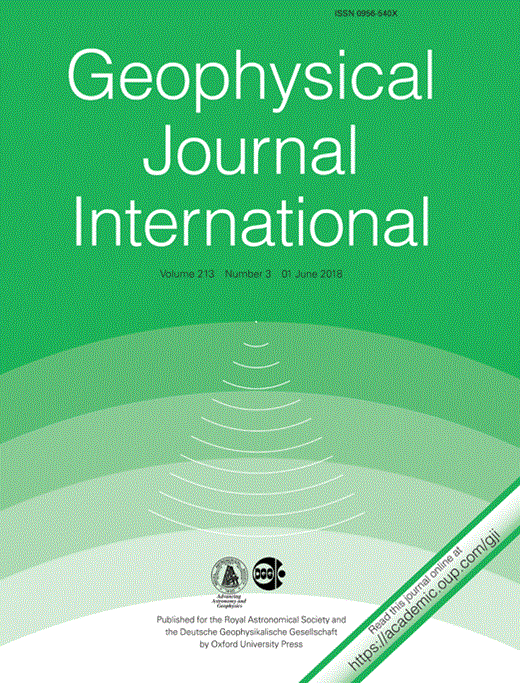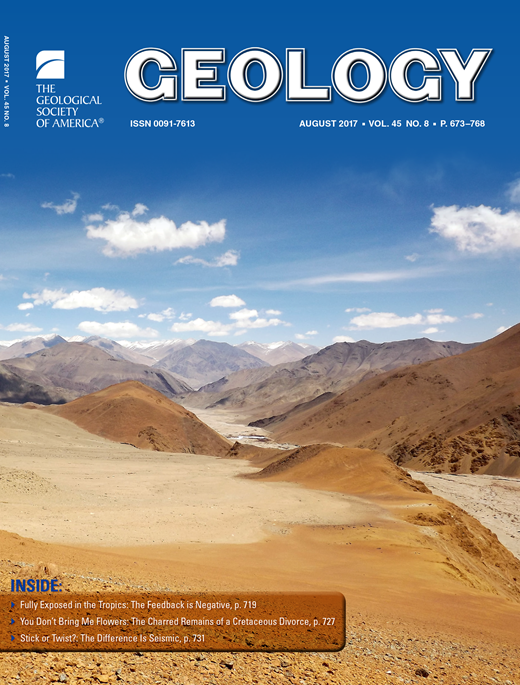
Map showing political boundaries in the horn of Africa with digital elevation data for the country of Ethiopia with a portion of the study area outlined.
The Tambien Group of northern Ethiopia is a succession of early Neoproterozoic mixed carbonates and siliciclastic sediments. These sedimentary rocks were deposited from ca. 820 to 700 million years ago in the time period leading up to and during the first low-latitude glacial event of the Neoproterozoic Era (the Sturtian Snowball Earth). The Tambien Group was deposited atop the volcanic sequence of the Tsaliet Group that records the formation of the juvenile crust of the coalescing Arabian-Nubian continental shield (the continental crust that underlies much of northeast African and the Arabian Peninsula).
Our research in Ethiopia has sough to develop integrated data sets of physical stratigraphy, chemostratigraphy and U-Pb geochronology from the Tambien Group. The goal of this work has been to develop a new backbone for stratigraphic correlation in the 100 million years preceding Cryogenian glaciation. Our overarching goal is to understand how and when potentially unique geochemical and paleogeographic boundary conditions were developed that allowed for global glaciation at the onset of the Cryogenian Period. Fundamental to this goal is the ability to use precise U-Pb ages to determine how quickly specific global changes occurred. Without a quantitative understanding of rates, we cannot hope to move towards understanding the processes responsible for specific changes, or even the background states that characterized this critical time interval in Earth history. One of the major challenges in the study of sedimentary records from this period of Earth history is the difficulty in obtaining age constraints from the rocks that yield these records of global change.
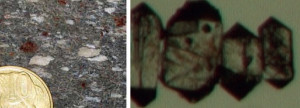
A tuff with pumice fragments on the left from the Tambien Group contains prismatic zircon crystals that can be dated to high precision using U/Pb methods.
While carbon (δ¹³C) and strontium (⁸⁷Sr/⁸⁶Sr) isotope, magnetostratigraphic, and paleontological records exist for the early Neoproterozoic Era, and are the primary tools used for correlation of stratigraphic sections around the world, geochronologic constraints of these records has been limited. Most carbonate platforms well-suited for the development of δ¹³C and ⁸⁷Sr/⁸⁶Sr data are developed on passive margins far from explosive volcanic activity that might deliver zircon-rich ash to the basin. The Tambien Group of northern Ethiopia is ideal getting new age constraints because it is a thick carbonate-containing succession deposited in a back-arc basin proximal to active volcanism. Zircons from these ashes can be dated very precisely through uranium-lead geochronology. We have pursued this geochronology in collaboration with Dan Condon’s lab at the British Geological Survey and in Blair Schoene’s lab at Princeton University. The ability to identify and date multiple ash beds throughout the stratigraphy provides an amazing opportunity that is rare in Proterozoic stratigraphy to develop many ages from a sedimentary basin from which we can also obtain data about changing ocean chemistry.
 Sediments of the Tambien Group were deposited in the time period leading up to the first Neoproterozoic ice age. The record of Proterozoic Earth history from the basin can be constrained in age due to the presence of abundant units of volcanic ash interspersed within the sediments.
Sediments of the Tambien Group were deposited in the time period leading up to the first Neoproterozoic ice age. The record of Proterozoic Earth history from the basin can be constrained in age due to the presence of abundant units of volcanic ash interspersed within the sediments.
Our work has lead to the discovery of abundant new exposures of pre-glacial and glacial sediments associated with the Sturtian glaciation. Pairing our field data with new geochronology and chemostratigraphic data has strengthened the case for interpreting Neoproterozoic carbon isotope variation as a record of large-scale changes to the carbon cycle (Swanson-Hysell et al., 2015). We have further shown global glaciation (the Sturtian Snowball Earth) initiated synchronously 717 million years ago (within uncertainty) in both Ethiopia and North America (MacLennan et al., 2018) — the first time such synchroneity has been shown for these events with high precision techniques.
We have further extended this research with additional data that demonstrates a time-variant transition from volcanism to sedimentation across the basin that is well-explained as resulting from the dynamics of a back-arc basin (Park et al., 2019). Using our data from the Tambien Group as a central record, and integrating data from several other basins around the world, we constructed the most temporally well-constrained composite carbon and strontium isotope curves yet developed for this interval of Earth history. Using the strontium isotope data, a simple global weathering model, and an analysis of the timing and paleolatitude of large igneous province eruptions and arc accretion events, we argue that collisional accretion of Arabian-Nubian Shield volcanic arcs are an overlooked, but important contributor, to increasing the carbon sequestration potential of Earth’s surface at the time. This accretion is likely to have played an important role in setting the stage for the initiation of the Neoproterozoic Snowball Earth through lowering atmospheric carbon dioxide. Overall, these data strengthen understanding of the timing and pace of the global change that dramatically altered Earth’s surface during Neoproterozoic time.
This material is based upon work supported by the National Science Foundation Division of Earth Sciences under Award No. 1325230. Any opinions, findings, and conclusions or recommendations expressed in this material are those of the author and do not necessarily reflect the views of the National Science Foundation.

